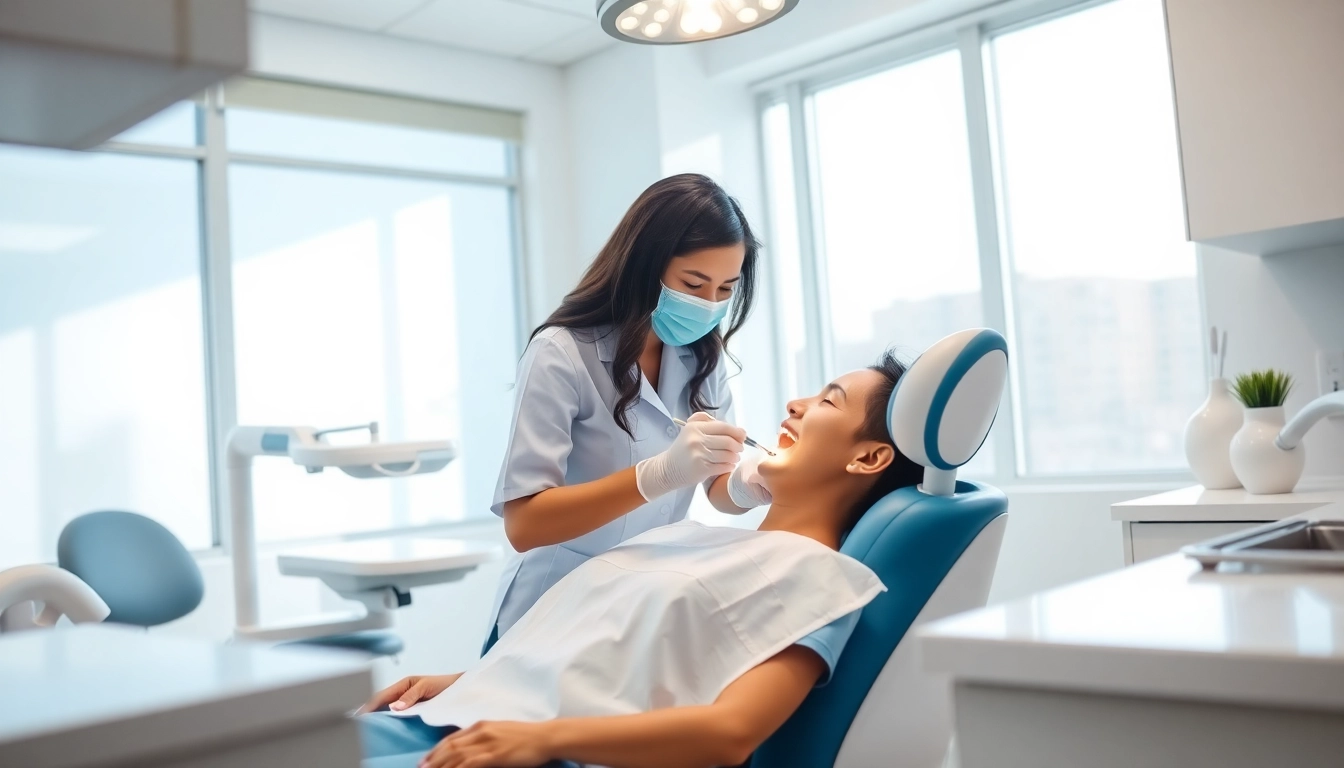
Understanding Dental Cleanings
What Are Dental Cleanings?
Dental cleanings are professional routine dental appointments conducted by dentists or dental hygienists to maintain oral health. During these appointments, a series of procedures are performed to remove plaque, tartar, and bacteria from the teeth and gum line. The process is vital in preventing gum disease, tooth decay, and other oral health issues. For a thorough understanding of what these cleanings entail, you can find more information regarding dental cleanings.
Importance of Regular Dental Cleanings
Regular dental cleanings play a pivotal role in ensuring not only oral health but overall health as well. Studies have shown that conditions such as heart disease and diabetes can be linked to poor oral hygiene. By having cleanings every six months, individuals can significantly reduce the risk of serious health issues, identify potential problems early, and reinforce good habits. In essence, these cleanings are preventive measures that help maintain a healthy mouth and body.
Common Myths About Dental Cleanings
Many misconceptions surround the topic of dental cleanings, often leading to anxieties or missed appointments. Here are a few common myths debunked:
- Myth 1: Dental cleanings are unnecessary if I brush at home.
- Truth: While home care is essential, professional cleanings can reach areas that regular brushing may miss.
- Myth 2: Cleanings will hurt.
- Truth: Although patients may feel discomfort, modern techniques and numbing options make cleanings more comfortable than ever.
- Myth 3: Only people with dental issues need cleanings.
- Truth: Preventive cleanings are essential for everyone, regardless of perceived dental health.
The Dental Cleaning Process
Step-by-Step Overview of Dental Cleanings
The process of a dental cleaning typically involves several steps:
- Medical History Review: The dental professional will review your medical history and any changes since your last visit.
- Physical Exam: A thorough examination of your mouth, looking for any signs of gum disease or cavities.
- Removing Plaque and Tartar: Using specialized tools, the hygienist will scrape away buildup from teeth surfaces, focusing on areas below the gum line.
- Gritty Toothpaste Cleaning: Next, a high-powered electric toothbrush is used with gritty toothpaste to polish the teeth.
- Expert Flossing: Flossing will help clean between the teeth where the toothbrush can’t reach.
- Rinsing: A rinse with a fluoride-containing mouthwash may follow to help protect the teeth.
- Fluoride Treatment: A fluoride varnish may be applied to the teeth for added protection against cavities.
Tools Used During Dental Cleanings
Various tools and instruments are utilized during dental cleanings to ensure optimal results:
- Scaler: This handheld tool is used to scrape tartar and plaque from the tooth surface.
- Curette: A curved instrument designed to clean around the gum line and remove debris in deeper pockets.
- Ultrasonic Cleaner: This device vibrates at a high frequency to dislodge tartar, often combined with a water spray for effective cleaning.
- Polishing Cup: Attached to a handpiece, this is used to buff the teeth with a special polishing paste, leaving a smooth surface.
How Long Does a Dental Cleaning Take?
The duration of a dental cleaning can vary, typically ranging from 30 to 90 minutes, depending on the condition of one’s oral health and the techniques used. For someone with extensive tartar buildup or gum disease, the cleaning may take longer, while a routine visit for a patient with good oral hygiene may be quicker. Consistency in visiting the dentist helps reduce the cleaning time as less buildup accumulates between appointments.
Types of Dental Cleanings Explained
Standard vs. Deep Dental Cleanings
There are primarily two types of dental cleanings: standard and deep cleanings. Standard cleanings, often referred to as prophylactic cleanings, are regular check-ups designed for individuals with good oral health. These include routine plaque removal and polishing.
Deep dental cleanings, also known as scaling and root planing, are necessary for patients exhibiting signs of gum disease. This process not only cleans above the gum line but also targets the roots of the teeth and the areas below the gums to eliminate infection and promote healing.
What Is Periodontal Cleaning?
Periodontal cleaning is a specialized cleaning process aimed at treating patients with periodontal (gum) disease. The procedure involves removing plaque and tartar not only from the teeth but also from the pockets around the teeth, ensuring a thorough cleaning to prevent further periodontal damage. Patients diagnosed with mild to severe gum disease may require this type of cleaning, which can significantly improve gum health and reduce inflammation.
When Is a Dental Cleaning Necessary?
It is recommended to have a dental cleaning twice a year for most individuals. However, certain factors may necessitate more frequent cleanings:
- Individuals with gum disease should consider cleanings every three to four months.
- Patients with a history of cavities or plaque buildup may need more frequent visits.
- Those who smoke or have other lifestyle factors that compromise oral health may also require additional cleanings.
Post-Cleaning Care
What to Expect After Your Dental Cleaning
After a dental cleaning, it is common to feel a bit sensitive, particularly after a deep cleaning where areas below the gum line were treated. Some patients may experience minor discomfort, which typically subsides within a day or two. It is essential to resume oral hygiene practices promptly to maintain the benefits of the cleaning.
Tips for Maintaining Oral Hygiene After Cleanings
To prolong the effects of your dental cleaning, consider the following tips:
- Brush your teeth at least twice a day with fluoride toothpaste.
- Floss daily to remove food particles and plaque from between teeth.
- Maintain a balanced diet and minimize sugary snacks that can increase plaque buildup.
- Rinse with an antibacterial mouthwash to help reduce plaque formation.
- Stay hydrated, as saliva plays a crucial role in oral health.
When to Schedule Your Next Dental Cleaning
Following your dental cleaning, your dentist will typically recommend a timeline for your next visit based on your dental health status. Most people are advised to return every six months, while those with specific oral health concerns may need to come back more frequently. Regular follow-up appointments are key to maintaining optimal dental health.
Choosing the Right Dental Office for Cleanings
Factors to Consider in a Dental Practice
Choosing the right dental office can make a significant difference in your experience of dental cleanings. Here are some factors to consider:
- Qualifications: Check the credentials of the dental professionals at the office.
- Technological Advancements: Inquire about the technologies and practices the office employs for dental cleanings.
- Patient Comfort: Look for dental practices prioritizing patient comfort, such as amenities and calming techniques.
- Availability of Services: Ensure the practice offers a comprehensive range of services in case further treatment is required.
Questions to Ask Your Dentist
Before committing to a dental office, consider asking the following questions:
- What cleaning methods do you use?
- How often should I have my teeth cleaned based on my dental history?
- What options do you offer to help patients with dental anxiety?
- Are there any aftercare recommendations I should follow post-cleaning?
Patient Testimonials and Reviews
Before choosing a dental practice, it’s beneficial to review testimonials and ratings from other patients. Feedback can provide insights into the level of care, customer service, and overall patient satisfaction. Online reviews can paint a clearer picture of what to expect from a dental office and help in making an informed choice.




